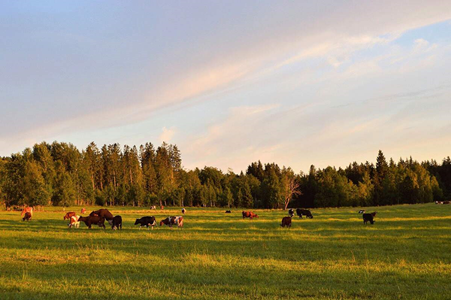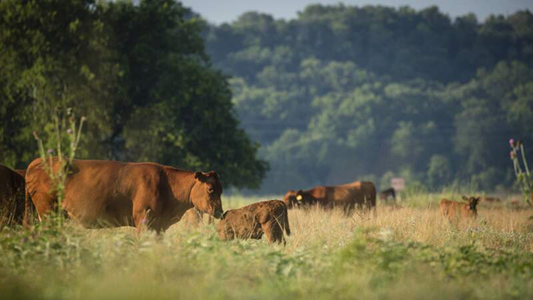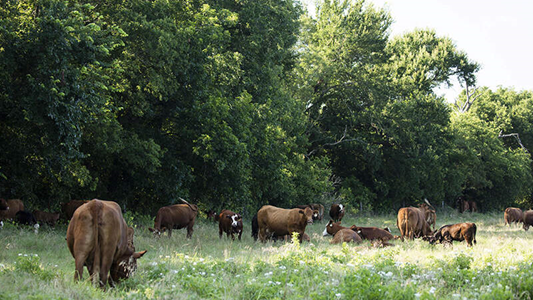
The effects of heat stress in cattle cost the U.S. livestock industry billions of dollars every year, and those numbers are only going to increase as average summer temperatures continue to rise. One of the largest concerns surrounding heat stress in cattle is the decreases in meat production as a result. When their bodies heat up, cows use their energy to try and lower their temperature, often resulting in them eating less. This seasonal weight loss can add up quickly and have a big effect on your bottom line.
Placing an emphasis on cooling your cattle during the warm summer months can pay huge dividends for the short and long-term health of your operation. Read on to learn more about the signs of heat stress in cattle and the different ways you can keep them cool.
Tips for Keeping Cattle Cool
- Shade
Providing shade during the hot summer months is essential, especially for dark-haired cattle. This can be easily accomplished by providing cattle with access to covered open buildings and pasture with trees. - Ventilation
For cattle that's already housed in an enclosed space, look to maximize your air flow by ensuring that all fans are working to move the air evenly throughout the space. - Extra drinking waterA cow's water intake will naturally increase with the rising temperatures, so it's essential to provide enough water to accommodate the herd.
- Feed during cooler times of dayWe know by now that cows don't eat as much when they're hot. One easy way to maintain their diets throughout the summer is to move feeding times towards the cooler parts of each day.
Know the Signs of Heat Stress
This information was gathered from the USDA's Agricultural Research Service:
- Stage 1: elevated breathing rate, restless, increased time standing
- Stage 2: elevated breathing rate, slight drooling, most animals are standing and restless
- Stage 3: elevated breathing rate, excessive drooling or foaming, most animals are standing and restless, animals may group together
- Stage 4: elevated breathing rate, open mouth breathing, possible drooling, most animals standing, animals may group together
- Stage 5: elevated breathing with pushing from the flanks, open mouth breathing with tongue protruding, possible drooling, most animals standing and restless
- Stage 6: open mouth breathing with tongue protruding, breathing is labored, and respiration rate may decrease, cattle push from flanks while breathing, head down, not necessarily drooling, individual animals may be isolated from the herd.


